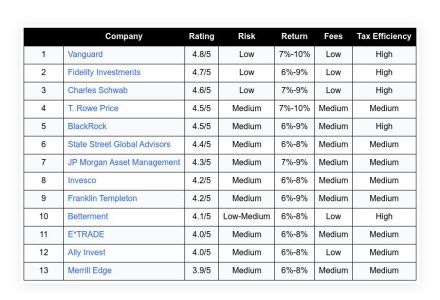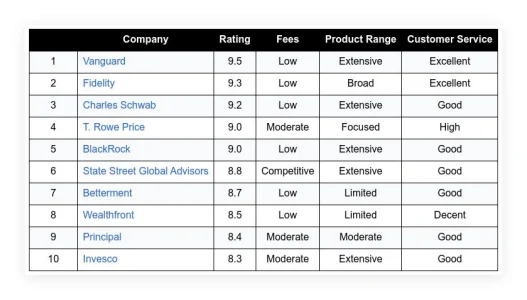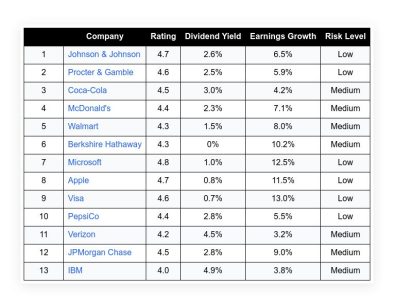Don’t feel bad if you haven’t started planning for retirement yet. While undoubtedly stressful, you’re far from alone.
In the 2024 Annual Retirement Survey, Allianz Life finds that 56 percent of Americans have no solid financial plan for retirement. The survey, conducted in February and March of this year, also found that nearly half (48 percent) of over-25s worry about living too frugally and not enjoying retirement enough.
Moreover, 45 percent of respondents said they are concerned about best distributing their retirement savings.
So, why do so many people put off their retirement planning? There is no single answer. Some people may be worried about their future or have competing financial priorities. Others just feel overwhelmed by the retirement process.
Although starting late can feel intimidating, creating a plan is never too late. Here’s a step-by-step guide to get you back on track.
Table of Contents
ToggleUnderstand Why Retirement Planning is Important
As you age, retirement planning helps you maintain your financial independence. Planning and saving early reduces your dependence on Social Security or other limited income sources. Also, by creating a clear retirement plan, you can enjoy your desired retirement lifestyle without worrying about money.
However, without a financial plan, retirement can limit your options and potentially burden your family members. Moreover, if you follow a solid strategy, you can still achieve financial security despite starting later.
Assess Your Current Financial Situation
To create a retirement plan, you must first assess your financial situation. Make sure you gather information about;
- Income. Include all sources of income, such as salary, side gigs, and investments.
- Expenses. Track your monthly spending, separating essentials (e.g., housing, utilities, groceries) from discretionary items (e.g., entertainment, travel).
- Savings. Check all your savings accounts, including emergency funds, general savings, and retirement accounts.
- Debt. Liabilities include mortgages, credit card balances, and student loans.
An exercise such as this provides a snapshot of your financial health. Furthermore, you’ll discover areas where you can save more, adjust spending, and pay down debt faster.
Calculate Your Retirement Needs
Estimate the amount of money you’ll need for a comfortable retirement. According to financial experts, you should aim for 70-80% of your pre-retirement income to maintain your current lifestyle after retirement. However, this depends on your specific circumstances.
Among the factors to consider are;
- Retirement age. When do you plan to retire? When you retire early, you’ll need a more significant savings account. Alternatively, a delayed retirement may reduce the total amount needed.
- Life expectancy. Estimating your life expectancy will help ensure that you don’t outlive your savings. Many advisors recommend planning for at least 20-30 years in retirement.
- Health care costs. It is essential to consider long-term care and supplemental insurance needs when planning for retirement.
- Lifestyle goals. Are you planning to travel? Is there a new hobby you’d like to pursue? The retirement income you receive should support your desired lifestyle.
Start Saving Aggressively
Every dollar saved brings you closer to financial independence, even if you’re starting late. To build your retirement savings quickly, follow these steps:
- Maximize retirement accounts. If your employer offers a 401(k) or 403(b) through work, take full advantage of it. Self-employed individuals may want to consider SEP IRAs or Solo 401(k)s, which have higher contribution limits.
- Open an Individual Retirement Account (IRA). IRAs offer tax advantages, which can help you grow your savings faster. According to your tax situation, a financial advisor can help you choose between traditional and Roth IRAs.
- Set up automatic savings. Contribute a portion of your income each month to retirement and savings accounts. This “set-it-and-forget-it” method builds savings without constant decision-making.
- Cut expenses and increase income. Cut back on non-essential spending. In addition, you can pursue side hustles, freelancing, and part-time work that will add to your retirement savings.
Invest Wisely
Investing can grow your retirement savings more quickly than using a regular savings account. When starting late, however, you should prioritize investments with a balanced approach. To put it another way, consider both growth and risk when investing.
- Diversify your portfolio. Combining stocks, bonds, and alternative assets like real estate or cryptocurrencies can achieve stability and growth.
- Increase contributions gradually. Increase your contributions as your income grows, even if it’s just a small percentage. Over time, this gradual increase will provide more savings.
- Consider professional help. With the help of an investment professional, you can develop a strategy that matches your goals and risk tolerance. Also, they can help you reduce the risk of losing money as you approach retirement.
Plan for Health and Long-Term Care
Retirement savings can quickly be depleted by medical expenses. According to some studies, a 65-year-old couple may need up to $351,000 in retirement savings.
Medicare’s basic coverage does not cover everything. It only kicks in at the age of 65, and it does not cover long-term care, such as assisted living or nursing home care.
- Explore Health Savings Accounts (HSAs). Don’t miss out on your HSA if you are still employed. You can deduct contributions and withdraw tax-free funds for qualified medical expenses.
- Consider long-term care Insurance. In the long run, long-term care insurance can help you save your retirement savings. As premiums rise with age, it’s best to start shopping for policies in your 50s or early 60s.
- Stay healthy. By exercising regularly, eating healthfully, and getting preventive healthcare, you can prevent costly medical issues in later life, allowing you to save more for other retirement needs.
Adjust Your Expectations (if Necessary)
Even though it’s important to aim for your ideal retirement, starting late may require changing expectations. If you have difficulty reaching your goal amount, consider the following:
- Delaying retirement. Working longer, even part-time, can significantly boost your retirement savings and delay withdrawals, thereby extending the life of your money.
- Downsizing. Moving to a smaller home or a cheaper area can reduce living expenses and free up equity.
- Exploring income options in retirement. Supplementing your retirement fund with income-generating hobbies, freelancing, consulting, or part-time work is possible.
Create a Withdrawal Strategy
While saving for retirement is essential, it’s only half the battle. Ultimately, you want your savings to last as long as possible. To be financially secure and comfortable in retirement, you must develop a withdrawal or decumulation strategy.
To help you decide which withdrawal strategy is right for you, here are some common withdrawal strategies;
- Required minimum distributions (RMDs). You must withdraw a minimum amount from your tax-deferred retirement accounts each year. Even though RMDs can provide a reliable source of income, they may also increase tax bills.
- The 4% rule. According to the 4% rule, you should withdraw 4% of your retirement savings each year, adjusted for inflation. However, it is not a one-size-fits-all solution. Depending on market conditions and individual needs, its effectiveness may vary.
- Tax-conscious withdrawals. First, withdraw from taxable accounts, then tax-deferred accounts, and finally, tax-free accounts like Roth IRAs. Using this strategy, you can minimize the overall tax burden on your business.
- Fixed-amount withdrawals. This strategy involves withdrawing a fixed amount each year from your retirement accounts. Although it provides predictable income, it is not optimal during market downturns.
- Earnings-only withdrawals. If you withdraw only the earnings from your investments, your principal will remain intact. However, this strategy can be less reliable in down markets as earnings fluctuate.
- Total return strategy. Using this approach, your investments will generate a total return, including income and capital appreciation. Each year, you can withdraw a portion of your total return.
- The bucket strategy. Your retirement savings are divided into three buckets: short-term, intermediate-term, and long-term. Income is provided immediately in the short-term bucket, while the two other buckets are invested to maximize growth and yield.
You may benefit from a different withdrawal strategy depending on your financial situation, risk tolerance, and lifestyle goals. In addition to your expected lifespan, social security benefits, and other sources of income, it is essential to factor in other factors.
Get Professional Guidance
Planning your retirement can be challenging, especially if you’re late. A certified financial planner (CFP) can create a customized strategy for you depending on your current financial situation and future goals. Additionally, advisors can help you stay accountable and adjust as your circumstances change.
Final Thoughts
Putting off retirement planning is rarely a good idea. However, it is not the end of the road. By taking steps now, such as assessing your finances, maximizing contributions, investing wisely, and considering healthcare needs, you can build an investment plan supporting a comfortable and fulfilling retirement.
In the end, the most important thing is just to start.
FAQs
What are the best retirement savings options for someone just starting out?
Among the most popular options are;
- 401(k) plans. This type of plan allows you to contribute pre-tax dollars to your retirement account. Employers sometimes offer matching contributions, which is essentially free money.
- Individual Retirement Accounts (IRAs) are tax-advantaged retirement accounts. There are often two types: Traditional and Roth.
- Health Savings Accounts (HSAs). In addition to being used for medical expenses, HSAs are a great way to save for retirement.
What if I’m self-employed? What retirement options are available to me?
If you are self-employed, you have the following choices;
- SEP IRA. Contributing to a Simplified Employee Pension IRA can allow you to save a significant amount of income from your self-employment.
- Solo 401(k). In this type of 401(k), the participant is a small business or self-employed person. In comparison to a traditional IRA, it has higher contribution limits.
How can I calculate how much I need to save for retirement?
There are several online calculators you can use to estimate your retirement needs. However, it would be best to consult with a financial advisor for a more accurate assessment. They can consider factors like your income, retirement lifestyle, and lifespan.
I’m worried about outliving my savings. What can I do?
The following strategies can help you make your savings last;
- Delay Social Security. If you claim Social Security later, your monthly benefits will be higher.
- Part-time work. To supplement your income in retirement, consider working part-time.
- Downsize. You may be able to reduce expenses by moving to a smaller house.
- Budget wisely. Set a budget and stick to it.
- Invest wisely. Develop a risk-return-balanced investment strategy with the help of a financial advisor.
What are some common retirement mistakes to avoid?
- Ignoring retirement savings. Start saving as soon as possible.
- Withdrawing early. You should avoid early withdrawals from your retirement accounts as penalties and taxes are associated.
- Not diversifying. To reduce risk, diversify your investments across different asset classes.
- Overspending in retirement. Again, create a realistic retirement budget and keep it up to date.
It doesn’t matter what small steps you take; they can make a big difference in your long-term financial security. And most importantly, be brave, and don’t let fear or procrastination hold you back.
Image Credit: Kampus Production; Pexels
















